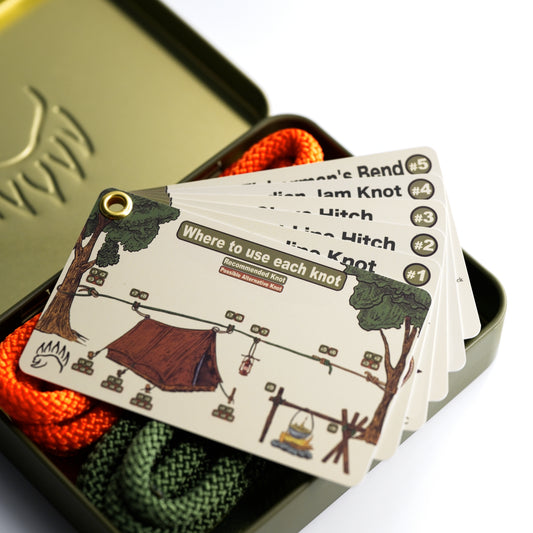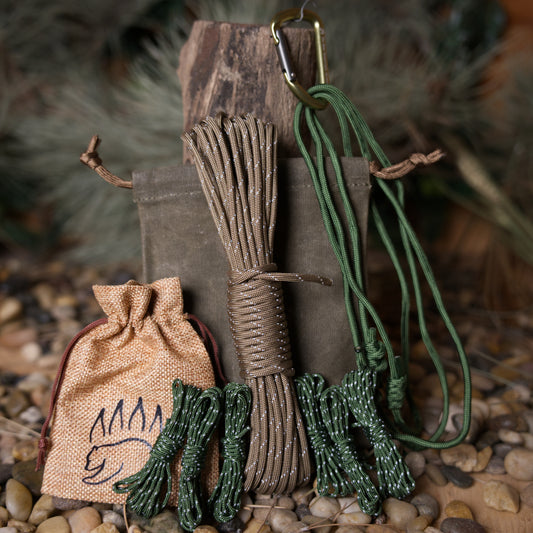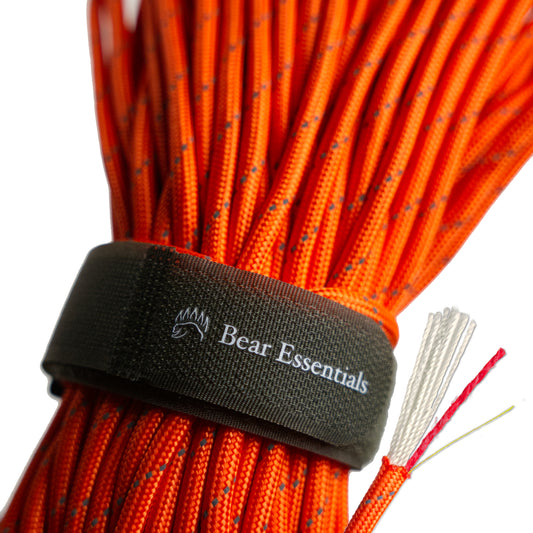How to Tie the Non-Slip Mono Knot
Usage
The Non-Slip Mono Knot is widely used in fishing, particularly for attaching flies or lures securely. Its non-slip design ensures that the knot remains firm even under dynamic loads, making it perfect for both freshwater and saltwater fishing.
Why Learn the Non-Slip Mono Knot?
Its compact loop design delivers reliable strength for fishing applications. This knot is a go-to for anglers needing a quick, secure connection for flies or lures.
Common Uses
-
Fishing:
- Attaches lures or hooks with a secure, non-slip loop.
- Connects lines for casting in freshwater or saltwater.
-
Flyfishing:
- Ties tippet to flies for precise presentations.
- Forms loops for leader-to-fly connections.
ABOK Number
(Ashley Book of Knots)
Other Names
Category
|
Notable Features
- Strong Loop: Holds firm under fish pulls, ideal for flyfishing.
- Quick to Tie: Forms faster than complex knots like the Bimini Twist.
- Small Profile: Creates a tidy loop, minimizing drag in water.
- Versatile Use: Works for flies, lures, or leader connections.
Variations
(No true variations listed; section left blank.)
Similar Knots
Perfection Loop vs. Non-Slip Mono Knot
- Pros: Simpler to tie and works well for quick leader loops.
- Cons: Less secure under dynamic loads, not ideal for flies or lures.
Surgeon’s End Loop vs. Non-Slip Mono Knot
- Pros: Easier to tie with fewer steps, suitable for basic loops.
- Cons: Bulkier and weaker, less effective for precise fly presentations.
History
The Non-Slip Mono Knot, also known as the Kreh Loop, was popularized by flyfishing expert Lefty Kreh for its strength and simplicity in attaching flies. While not listed in The Ashley Book of Knots, its widespread use in modern flyfishing reflects its effectiveness for creating non-slip loops. Its adoption in general fishing for lures and hooks highlights its versatility in angling scenarios.
Security Level
The Non-Slip Mono Knot provides high security for fishing, forming a strong, non-slip loop that holds well under moderate to heavy loads when tied correctly. It requires precise tightening to prevent slippage, especially with slick monofilament or fluorocarbon lines. Adding extra wraps ensures reliability for critical casts.
Downsides
- Precise tightening: Can slip if not tensioned properly during tying.
- Slick lines: Less effective on braided lines without extra wraps.
Structure
- Pass the tag end through the eye of the fly or lure, leaving 6-8 inches to work with.
- Form a small loop by bringing the tag end back toward the standing line, keeping the loop open.
- Wrap the tag end around the standing line 5-7 times, moving away from the fly.
- Pass the tag end back through the small loop, keeping wraps tight.
- Wet the knot, pull the standing line to tighten, and trim the tag end close.
Pro Tip: Wet the line before tightening to reduce friction and ensure a snug knot.
FAQ
Is the Non-Slip Mono Knot strong enough for big fish?
Yes, it’s reliable for moderate fish like trout or bass when tied with 5-7 wraps, but test it first.
What’s the best line for the Non-Slip Mono Knot?
Monofilament or fluorocarbon lines work best for secure, non-slip loops in flyfishing.
How does the Non-Slip Mono Knot compare to the Perfection Loop?
The Non-Slip Mono Knot is stronger for flies and lures, while the Perfection Loop is simpler but less secure.
Can the Non-Slip Mono Knot be used in saltwater fishing?
Yes, it works well in saltwater for lures and flies, especially with monofilament lines.
Why choose the Non-Slip Mono Knot over the Surgeon’s End Loop?
The Non-Slip Mono Knot offers a smaller, stronger loop, ideal for precise fly presentations.
Important Notes on Safety
Common failure points include loose wraps or improper tightening, which can cause the knot to slip. Always verify the wraps are snug and test the knot under light load before fishing.
Check the line for wear or slickness before tying.
Ensure 5-7 wraps for a secure hold.
Practice tying in calm conditions first.







